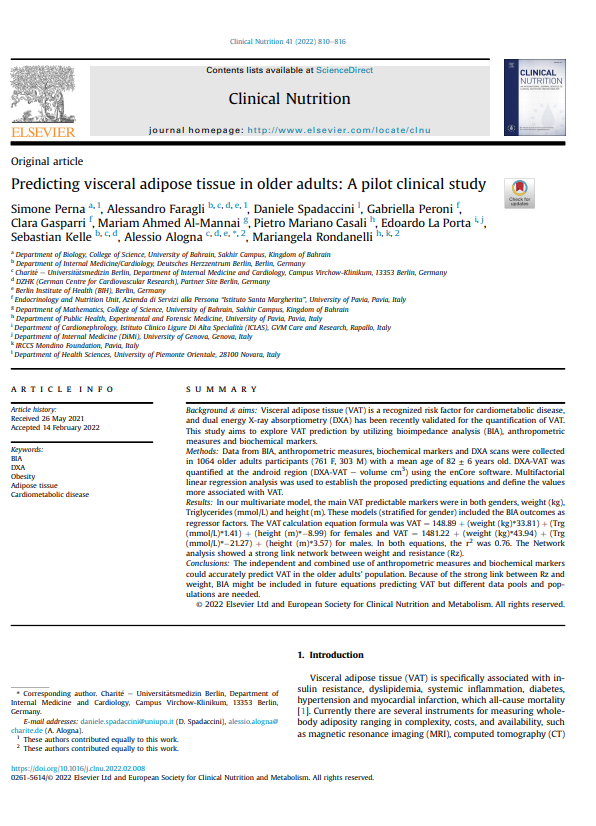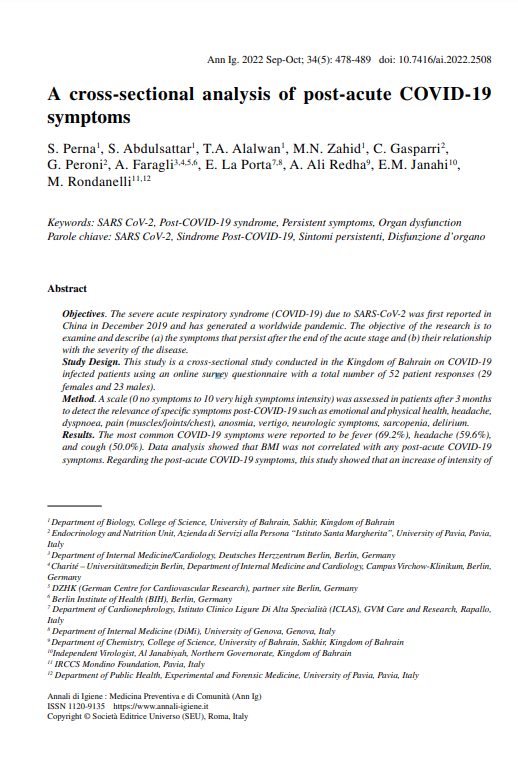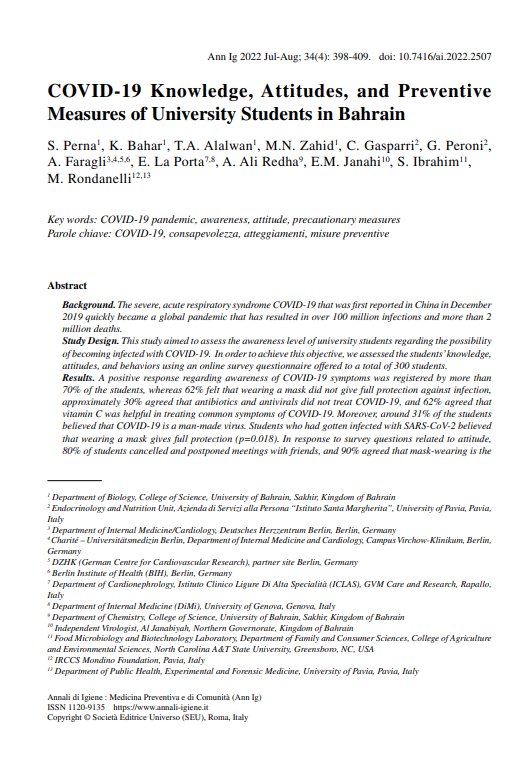وثيقة
المعرف
https://digitalrepository.uob.edu.bh/id/5eae4331-831e-4ecd-ac23-2b90a36c1dc3
Association between des-acyl ghrelin at fasting and predictive index of muscle derangement, metabolic markers and eating disorders: a crosssectional study in overweight and obese adults
وكيل مرتبط
Spadaccini , D, مؤلف مشارك
Gasparri , C, مؤلف مشارك
Peroni , G, مؤلف مشارك
Infantino , V, مؤلف مشارك
Iannello , G, مؤلف مشارك
Riva , A, مؤلف مشارك
Petrangolini , G, مؤلف مشارك
Alalwan , T.A, مؤلف مشارك
Al-Thawadi , S, مؤلف مشارك
Rondanelli , M, مؤلف مشارك
دولة النشر
Kingdom of Bahrain
مكان النشر
sakhir, bahrain
الناشر
University of Bahrain
تاريخ النشر
2022
اللغة
الأنجليزية
الموضوع
الملخص الإنجليزي
ABSTRACT:
Background: This study aimed to analyse the impact of des-acyl and acyl ghrelin (AG) on a wide range of muscular and metabolic markers and in order to discover the possible relationships and interactions of des-acylated ghrelin (DAG) on eating disorders. Materials & Methods: A total of 88 subjects (64 women and 24 men, with a mean age of 43 years and a mean body mass index (BMI) of 30.20 ± 3.27 kg/m2) were enrolled in the cross-sectional study. Results: The findings showed that for each unit of increase of free fat mass index (FFMI), levels of DAG decreased by −41.11 pg/mL (p < 0.05). Moreover, similar associations with DAG were found for insulin (β = −30.67; p < 0.001), leptin (β = −0.64; p < 0.05), body weight (β = −14.36; p < 0.001), and free fat mass (FFM) (β = −30.67; p < 0.001). In addition, associations were found between DAG and resting energy expenditure (REE) (β = −0.84; p = 0.05) and the binge eating scale (BES) in which a
unit increase of the BES score Q3 (depression) correlated with a decrease of DAG levels (β = −9.98; p
= 0.08). Further, a unit increase of AG/DAG ratio correspond with an increase in body weight (β = 12.20; p < 0.05), BMI (β = 4.70; p < 0.05) and fat mass (β = 7.30; p < 0.05). However, the AG/DAG ratio was not associated with FFMI (β = 2.61; p = 0.165) and FFML/BMI (β = −0,064; p = 0.625). Conclusion: This study suggests that higher levels of DAG at fasting are indices of poor muscle mass, insulin resistance and depression.
عنوان الدورية
Nutritional Neuroscience
المجموعة
قالب العنصر
مقال دورية




